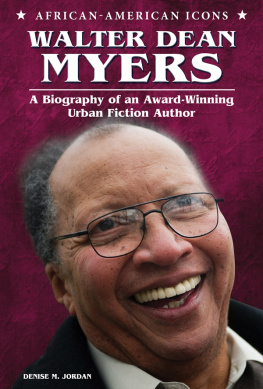
Jess Walter
Land Of The Blind
2009
To Bruce, Kristie, and Ralph, and in memory of Carol
In the land of the blind the one-eyed man is king. - Erasmus, Adagia
IT IS CUSTOMARY WITH THIS SORT OF THING TO START WITH A BODY
HE SITS ALONE
He sits alone in the interview room, his unshaven face in his hands, a guy about her age and not exactly bad looking, for a loon anyway. He's familiar and yet she can't place him. It is the kind of familiarity that grates like an unwelcome song. She gives him names: Dave. Steve. Rocco. It is none of these. The Loon wears dirty blue jeans and a long-sleeved black shirt with the top two buttons open. He is tall and square shouldered, and even though his clothes are a mess, they fit. They are not the clothes of a bum. He seems if not successful, at least employable. His hair is dark and long and tousled and the only thing keeping him from being handsome is a missed haircut or two.
And the eye patch, of course. The patch is black and covers his left eye, its strap slicing through his long hair. And even the eye patch isn't so much a flaw as an alarming accessory, making him seem untrustworthy and roguish. A pirate, Caroline thinks.
Caroline Mabry is a police detective, although for the last several months she has not been a very good one. She has burned out on the job or lost her way or stopped believing in it, and while her colleagues were polite at first, there were no illusions once she was put on swing shift swig shift it is called, the refuge of burnouts and department drunks six months from retirement.
Certainly she's too young for swig shift, just thirty-seven, and yet here she is, stuck on a Friday night watching some lunatic sweat and shift and get his story as straight as his addled mind will allow. The Loon looks around the walls of Interview Two her favorite, and even that is depressing, that she actually has a favorite interview room. It occurs to her that if she saw this pirate in a bar instead of sitting at a table in a police interview room, she would want to talk to him. Jesus. When did she begin looking at suspects and derelicts (not bad looking; employable) as potential romances?
The desk sergeant comes toward her with a clipboard.
"So that's him?" Caroline asks.
"That's your guy. Fuckin' nut. Want me to run him off?"
"Nah. It's probably nothing, but if we don't talk to him and it turns out there's something here-" She doesn't finish the thought.
"Want me to stick around? Or I could send someone back."
"Nah," she says, "I got nothing else to do. I'll listen to his UFO story and then I'll call the bin."
The desk sergeant is only too happy to take an order that requires no work from him. "Your call."
Caroline turns back toward the interview room. "He wouldn't give you a name?"
"Nope. And no ID."
"Run his prints?"
"Yeah. No record. No warrants. Nothing. Just a guy who wants to talk."
"Does he look familiar to you?"
"Sure. He looks like a pirate." The sergeant walks back toward his desk.
Caroline returns to the door of the interview room and watches the nervous guy chew his nails. That's what you get when you volunteer for swig shift UFO abductions, ninja attacks, black helicopters, listening devices, ghosts, Bigfoot, transgender experiments, pirates, and worst of all, the perpetually, chronically, criminally lonesome: those loons flirting with the edge, tired and confused, and, above all, alone snap-eyed, breathless people who claim to have information about a murder (usually Kennedy's or Princess Di's or Jimmy Hoffa's or Elvis's or Jesus') but who really just want to talk about when daylight savings time begins and why the Safeway moved and how the children never call and what channel Wheel of Fortune is on.
She watches this Loon, in his black shirt and eye patch, its strap nested in his bushy hair, and thinks there is something different about him, something she can't quite name. Of course, it could be nothing more than her fascination with the place he was arrested. The clipboard duly reports that This Particular Loon was picked up at 8:03 P.M. when patrol responded to a guy scaling the scaffolding of the old Davenport Hotel the twelve-story Spanish Renaissance landmark that is the most famous building in Spokane, even though it has been sitting vacant the last fifteen years.
Like any native, Caroline has always known about the hotel, but she really became aware of it in college, when she was researching a paper on the writer Thomas Wolfe and found in his journals that he "arrived into Spokane in good time and to the Davenport Hotel and a bottle of Scotch and conversation," and left the next morning "west from Spokane through country being more barren all the time." The effect on Caroline of reading this entry was something like finding a picture of one's parents when they were young and good looking, and experiencing a shock and a sense of loss because they had once lived interesting lives. She was shocked to find that her hometown was considered in the 1920s, at least Seattle's jazzy sister, that Teddy Roosevelt and Charles Lindbergh and Ethel Barrymore had happily come by rail, that Calvin Coolidge and Douglas Fairbanks and Amelia Earhart and, yes, Thomas Wolfe, looked forward to a night at the Davenport as an outpost between the deep forest and the desert scablands.
By the time Caroline was an adult the Davenport Hotel, like Spokane, was long out of style, stripped of its silver service and gilded furnishings, its gardens and tropical birdcages, and remodeled in the plastic-and-shag fashion of fifties motels, the final indignity being the family swimming pool that replaced the rooftop tennis courts and putting greens. The hotel had closed in 1985, the same year Caroline read Wolfe's brief account in college. Five years later, she responded to her first call at the empty hotel rousting some bums and she couldn't believe that this dark, abandoned husk, its marble staircases covered with pigeon shit, was the same place Wolfe had once sought out.
For fifteen years, she watched attempts at renovating the Davenport come and go like an addict's promises Caroline herself was a dues-paying member of the Friends of the Davenport. Then, finally, just after the turn of another century, the remodeling began in earnest, and Caroline caught power-washed glimpses of cornices and sills, lathe-and-plaster guts of old rooms slid through telescoped tunnels into street-level Dumpsters, replacement chandeliers and banisters carried in, the gunk scraped out of the swimming pool. Even a cynic like Caroline no great fan of symbols imagined that if the project were ever finished, it could signal nothing less than Spokane's long-awaited rebirth.
So maybe she finds some vague significance in the fact that the Loon was caught haunting the Davenport. He had apparently climbed a construction fence to some scaffolding and into an unlocked window. A bus driver saw the Loon crawl through the window and called the police, who found the disoriented man staring out a window on the twelfth floor, head in his hands. According to the report, he was crying.
From the notes and the desk sergeant's brief description, she can imagine what happened next: The patrol officers had the guy lie facedown on the floor. Distraught and unaccustomed to this sort of treatment, he didn't get down at first and they were rough with him: a knee in his back, firm grasp of his wrist. He didn't fight. The officers handcuffed him and determined two things he didn't have a weapon, and he was an EDP, Emotionally Disturbed Person. They shone a flashlight in his one good eye, and the pupil did what a good pupil does: shrink. So he wasn't overdosing on drugs more likely a mental patient skipping his meds. He had no identification and seemed unwilling or unable to give them his name. In response to questions, he simply shook his head.
Next page









